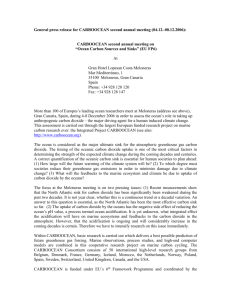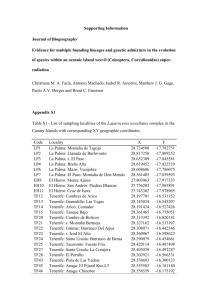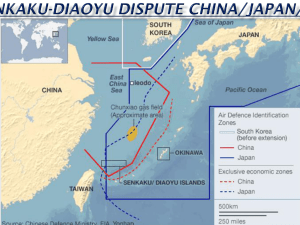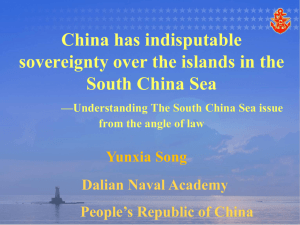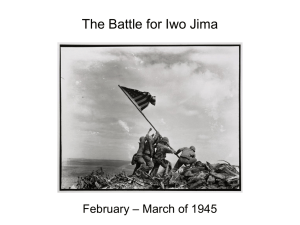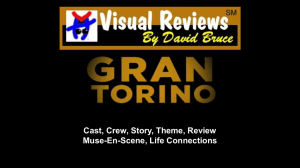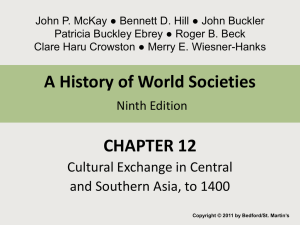Historia de Las Canarias
advertisement
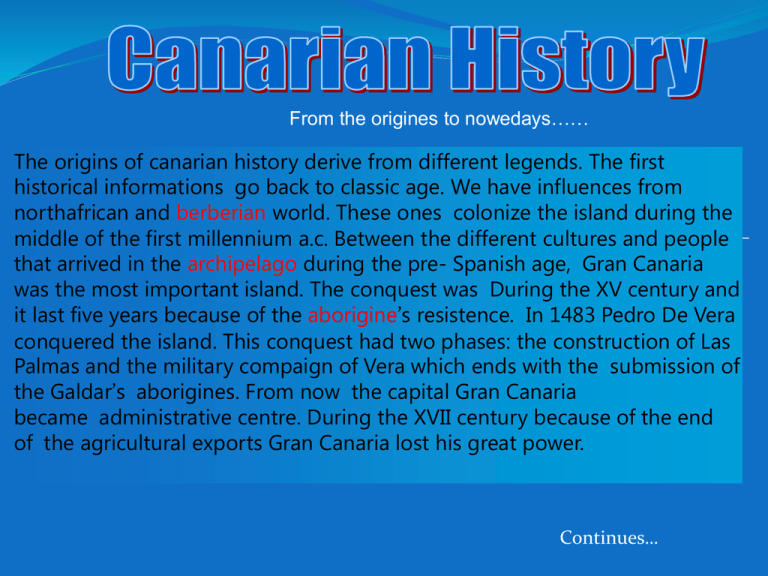
From the origines to nowedays…… The origins of canarian history derive from different legends. The first historical informations go back to classic age. We have influences from northafrican and berberian world. These ones colonize the island during the middle of the first millennium a.c. Between the different cultures and people that arrived in the archipelago during the pre- Spanish age, Gran Canaria was the most important island. The conquest was During the XV century and it last five years because of the aborigine’s resistence. In 1483 Pedro De Vera conquered the island. This conquest had two phases: the construction of Las Palmas and the military compaign of Vera which ends with the submission of the Galdar’s aborigines. From now the capital Gran Canaria became administrative centre. During the XVII century because of the end of the agricultural exports Gran Canaria lost his great power. Continues… We must wait until mid-nineteenth century because they establish the "ports", a special economic regime designed to promote trade relations in the islands. It is precisely this benefit, based Tax facilitation and free trade, which acts as the best attraction because the number of British boats and naval companies calling on the island,. Currently, the condition of Gran Canary island, is stipulated in the Law of Economic and Fiscal Regime, established as a result of incorporation of the Canary Islands in the European Union. The boat traffic was what led to Gran Canaria the development of tourism, which over the years will become the main source of revenue and positioned as one of the main tourist destinations in the world. From the second half of the nineteenth century Gran Canaria began to spread among Europeans as a center of rest for tourists and the sick, it was used by shipping companies, in their travel, accommodation cabins for travelers. They were also encouraged these companies to create hotels in the island, among them the Santa Catalina (1890), Las Palmas de Gran Canarias, the only establishment, which since its opening is still open. The development of tourism, and services that were built around this area was stopped for different wars (First and Second World War, Spanish Civil War) and will be up to 50 years when this activity returns to record numbers of visitors to a significant. Even the opening of the Gran Canaria (Gando), in 1930, helped to revive tourism. In the hometown of 1957 landed at Gando an airplane company Transair Sweden AB, with its 54 seats occupied. It was the first in a series of charter flights to Gran Canaria which joined to mass tourism and business in the modern tourist . Cenobio of Valeron (Santa Maria de Guia). One of the most spectacular repository of all the Canarian islands; a big collective granary, evident example of the meaning of canarian agricultural activities and dirigent caste’s power. The cueva pintada in Galdar: is one of the most important deposits of Canarian islands, not only for its dimension but because it represent one of the example of the aborigine art: the cueva pintada which gives the name to all the domestic compound. Punta Mujeres (San Bartolomé of Tirajana). This is a large population and one of several coastal settlements on the coast of the island of Gran Canaria. Poblado of Tunte (San Bartolmé of Tirajana). The largest complex of caves of the Canary Islands, is a big village, a hamlet in the open stone, which includes homes, barns, cemeteries and cave paintings. Fortalezas Las (San Bartolomé of Tirajana). A good example of a fortified village made up of natural caves and worked in the artificial rock. Some of them were the remains of painting and other utility funeral, as well as silos. Continues… La Audiencia (Temisas). Village worked artificially caves used for several purposes: the bedroom, kitchen, silos, barns .... Letreros of Los Balos (Agüimes). The most important group of stone carvings of Gran Canaria, which meets inside various types of incisions Canary: anthropomorphic, zoomorphic, Registration alphabetic, geometric ... More .... Risco of Canario (Agüimes). Located in Barranco of Guayadeque, this complex of thirty caves artificial, difficult to access, it was quite easy to defend in case of attack. Draguillo El (Telde-Ingenio). A field where you can contemplate engravings, silos, caves and burial caves habitable. Almogaren de Amurga. One of the most complex and spectacular deposits interpreted as places of worship. Cuatro Puertas (Telde). Large cave, dug by hand in the volcanic rock. Its most characteristic is represented by the four doors that give rise to a horizontal platform. Its use is linked to the practice of magic-religious canaries. Poblado of Tufia (Telde). Complex formed by a group of several caves and stone houses concentrated in separate households and burial mounds. Many of these buildings has been assigned a specific function. Poblado Tara (Telde). Here are the most important artificial caves of Gran Canaria and in it were found with tools that were used canaries to their daily chores. Continues… The cultural elements that characterize the people of the Islands are the results of an open and rich history that has marked the course of the islands. Canarian culture has received contributions from Africa, Europe and America. This is why the culture of canaria uses the terms like "tricontinentalità" or "Atlantic". in the cultural identity of the Canary Islands there are three elements: the Berber origin, the European, and the Spanish, but with an important contributions from the Portuguese, British and Central European, and finally the influence from the American migration and trade relations with Latin America; The substrate Aboriginal Despite the acculturation process that followed the conquest, the substrate still present in traditional sports and games (canaria fight, fight stick, skip the pastor) and in some kinds of folk music (tajaraste, sirinoque) ; industries, mainly in traditional ceramic canaria, hereditary indigenous; Canaries in the language, especially in the vocabulary related to pasture, on elements of nature, antroponimia and toponimia; gastronomy, mainly through the gofio culinary and its derivatives. There are also in the collective memory, stories and legends that refer to the pre-Hispanic world (Garo holy tree, the legend of Princess Ico ... etc). The European stamp canaria The company that was founded after the conquest and colonization is the archipelago stand for parameters imported from Europe, mainly from Spanish cities (Spanish, institutions castellana origin, religion, etc. ..). The contribution of the different peoples of the Iberian peninsula has many cultural events in the Canary Islands, although modified in agreement with the internal development of the islands and local tastes. Quest'influsso appears, for example, in the folklore music, the traditional garments, folk architecture, gastronomy, in the Canary Islands dialect, craft, etc ... The Portuguese influence is especially significant, especially in the language canario, inheriting a fundamental part of the lexicon of language use. " The architecture is canaria demonstration of this fusion of different elements Iberian, which adds a mark of their own, and after reaching America. Along their history, the islands have been a transit area and port of people from different parts of Europe. Among those who have left a greater imprint on the cultural needs in the Canaries second British, Flemish, French-Norman and Genoa. The party's main town hall Arucas is that of his patron, St. John the Baptist (June 24). The day before we celebrate the traditional burning of the patron, is organizing an exhibition of livestock and a pilgrimage, where men and women dressed typically a time to folkloric dance music of canaria. The carnival of Maspalomas is something that absolutely must be visited! Apparently is the third largest carnival in the world, whether or not it is safe, it is irrelevant, because it is true that it is one of the most unusual and colorful. The procession is formed by all the caravans, motor cars, imaginative constructions like islands, volcanoes, bars, boats and everything else you can imagine ... everything that you see, will surprise you, the women wearing traditional costumes of carnival and run in front of the public. The dancers perform acrobatics on a platform of 18 meters. There are tapas bars on every corner. The atmosphere is very important and pleasant.
